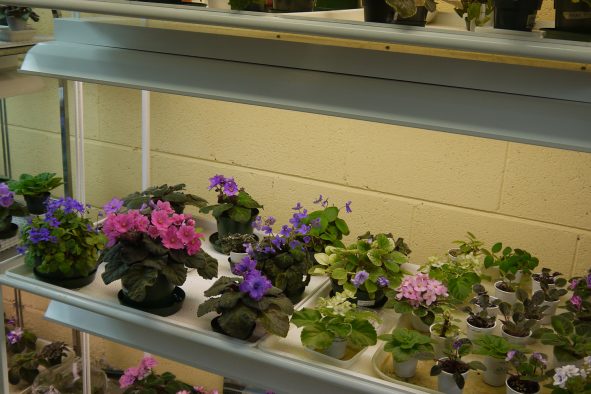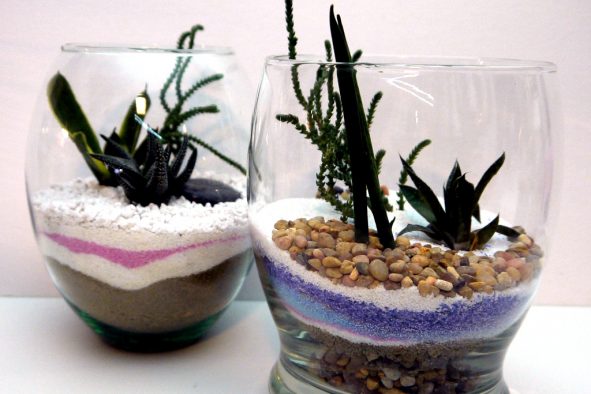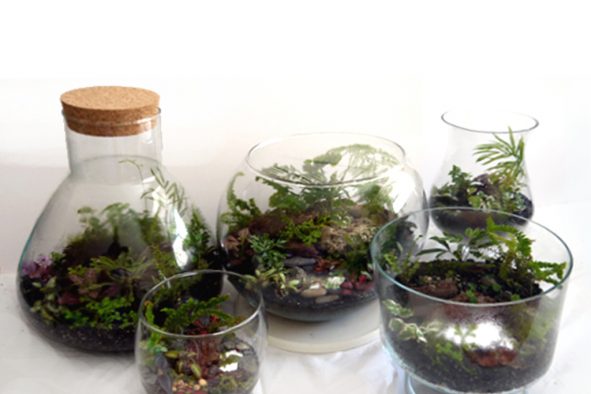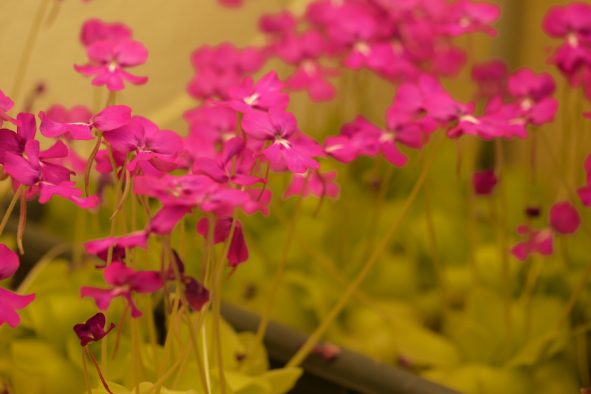Woodland terrariums are so fun to build, but getting the small, tiny plants you need for them can be a challenge. In a typical woodland terrarium, I have anywhere from 15-25 DIFFERENT types of plants….. often more than one plant of each kind. It’s this variety that makes the terrarium interesting. I have solved this problems by sharing plants with friends as well as taking cuttings and dividing larger pots. In this blog, I will talk to you about suitable plants I use as well as easy techniques.
The first thing you need is propagation supplies. Since woodland plants need humidity to grow, I use vermiculite, a mica-based material that provides a damp rooting environment, but no nutritional value. This is important since plants are less likely to rot.
I use 2 cups of fine vermiculite that I buy from a garden centre, to 1/3 cup of water and put them in a bag and mix them up with my hand. The vermiculite will be damp but not wet. I put this mixture into my “greenhouse” which can be any kind of sealed container with a clear lid. The fancy version is the small greenhouses sold in garden stores. My preferred method is take-out food containers. Once the container is sealed, you will not need to water for at least 3 weeks. Don’t worry, your plants won’t run out of air either. As long as they don’t dry out, they will do their thing and root.
1. Stem Cuttings
Plants which like humidity and have stems are perfect for making cuttings. They include, but are not limited to: Polka dot plant, Snowbush, Oxalis, Pilea, Wandering Jew and nerve plant.

Follow these easy steps for rooting stem cuttings:
Your cutting has growing areas called buds, end bud at the tip, and side buds where the leaf attaches to the stem.The end bud suppresses growth in the side buds, and makes your stem grow taller. The side buds have the potential to become blooms, branches or roots.
By cutting the end bud off, you allow the side buds to grow and make the plant bushy. By cutting the two lower leaves, you will encourage roots to form. Cutting a bit off the leaves, will encourage them to get those branches out faster.
Let’s see what we can expect. We’ll push the stem down in damp vermiculite so the section with the two bottom leaves is in it. Not only will roots form. But the side buds also grow, giving us a new, more compact plant.
2. Dividing plants
Most potted ferns are made of smaller plants that spread through roots. These include Maidenhair, Fluffy Ruffles, Button and Silver ferns. By softening the soil, you can separate individual plants and either pot them up in a covered container which has damp potting soil.
Chamadorea palm is also an excellent plant for division since the individual stems are actually separate plants. Once separated, within a month, each plant will grow into an individual plant for a terrarium.
3. Ground Covers

Ground covers like Creeping ficus, creeping ivy and Spike moss, all have stems that grow on the ground with roots that naturally occur a leaf nodes. Separating smaller sections of stems and letting them grow will give you good-size small plants to put in terrariums.
More information?
If you want more information, take a look at the video on my youtube channel at:























